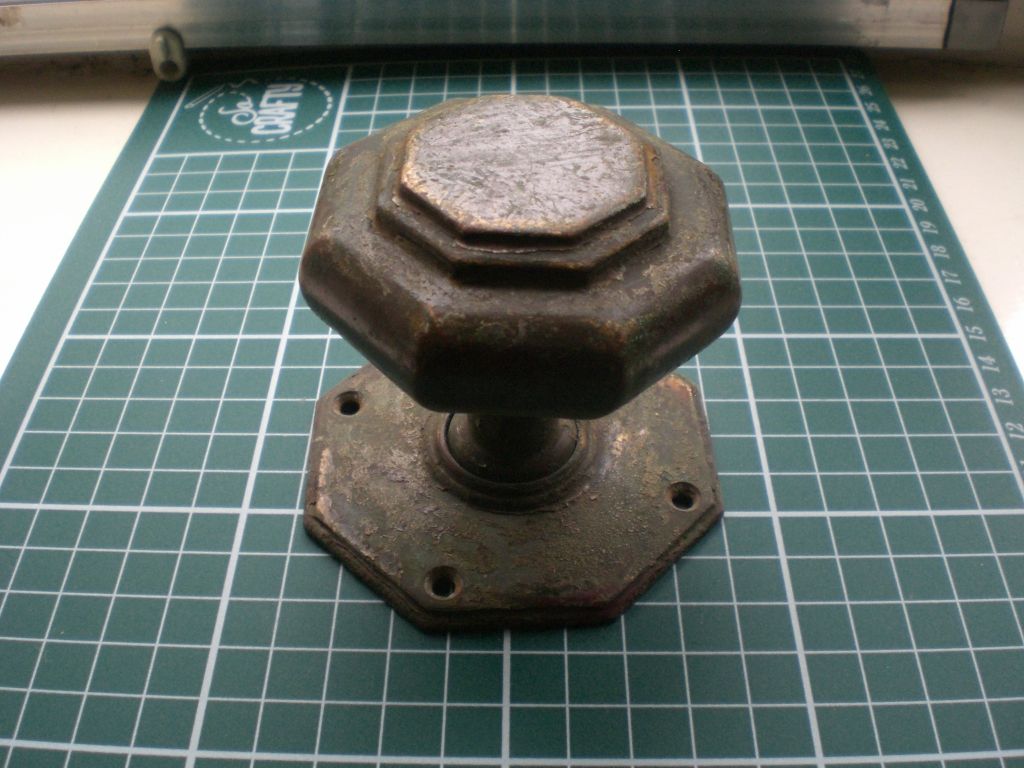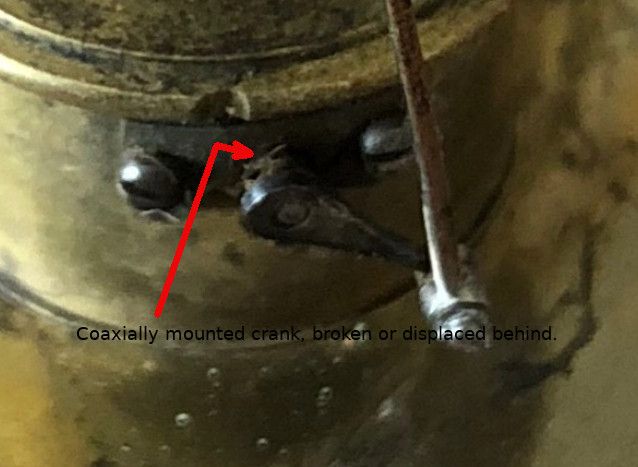Posted by Michael Hudson 6 on 16/05/2019 11:28:06:
… The newspaper article mentions that the "needle-like eccentric has recently become detached". To me it all looks in place – and I know it's run since the article was written – does it look like anything might be missing?
Hard to tell what some mechanically illiterate journalist was trying to say 100 years ago. But, that small boss with the hole in it on the cross-head does look sort of needle-ish size. But, it obviously is not designed to allow whatever fits in it to pivot in the manner of the other two rods connecting to the crank arm and crank gear. Whatever fitted in there, if anything, would have had to run in a straight up and down motion. Which matches with the small notch cut in the brass flange directly below it, possibly for clearance of whatever "needle" went up and down there.
But then what did it do? Sure looks tight for space in there for any kind of crank arm or eccentric to operate behind that existing crank arm. Possibly a small disc or crank sticking out that mystery hole below the crank, which was pushed in one direction by the descending "needle" from above then returned somehow to position by being caught by the rotating main crank arm? All getting a bit Heath Robinish but have you ever seen inside an old clock?
What diameter is the doorknob? Just trying to get a better idea of the scale of all those tiny bits.
One thing you could do is take that filler screw out of the "boiler" (doorknob) and connect up a piece of plastic tubing etc and try blowing in there while rotating the flywheel. You should be able to feel if any valve action is going on inside that large cylinder by internal means that we can't see from the outside.
Other than that, very careful disassembly and inspection would be the only way to figure out how the valve gear works and how it might have been operated. That really should be done by someone with experience in small model or clock making work. It would be a shame to have such a gem damaged by inexperienced "wrenching".
Nick Clarke 3.







